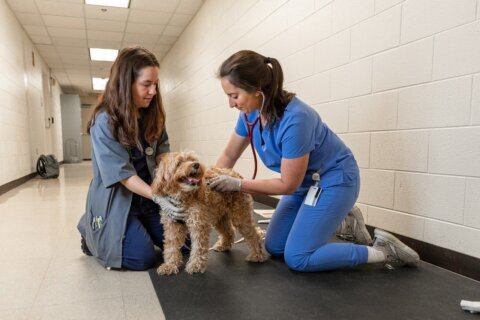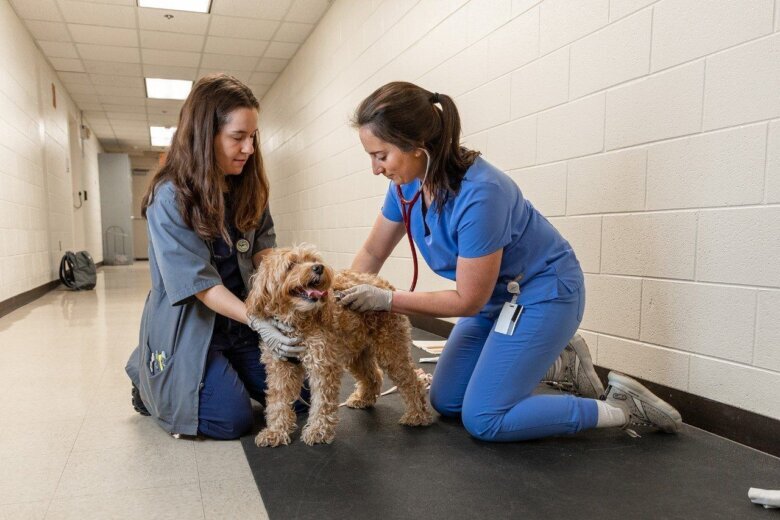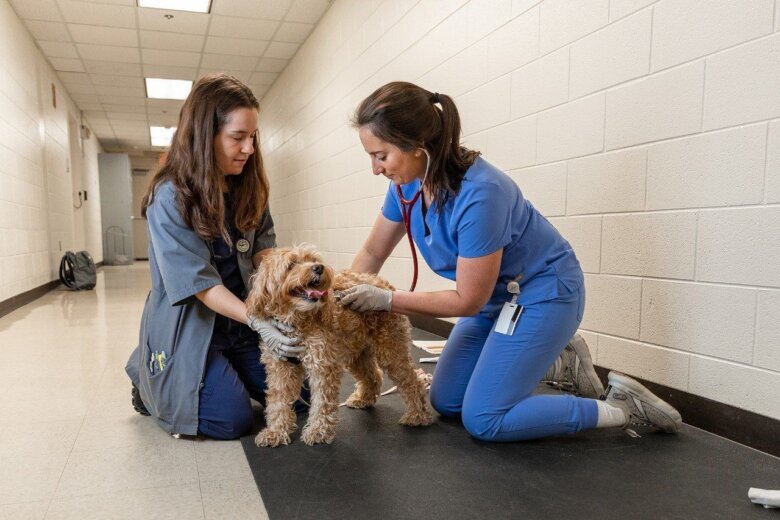While surgery is the first and most common treatment for most people with brain tumors, it's not always an option. An ongoing trial at Virginia Tech's Virginia-Maryland College of Veterinary Medicine is investigating whether a non-invasive therapy can eliminate the need for surgery to treat brain tumors in dogs.

An ongoing study at Virginia Tech's Virginia-Maryland College of Veterinary Medicine is investigating whether a non-invasive approach could eliminate the need for surgery to treat brain tumors in dogs. (Courtesy of Virginia Tech)

An ongoing study at Virginia Tech's Virginia-Maryland College of Veterinary Medicine is investigating whether a non-invasive approach could eliminate the need for surgery to treat brain tumors in dogs. (Courtesy of Virginia Tech)
For most people with brain tumors, surgery is the first and most common treatment, but it's not always an option.
An ongoing study at Virginia Tech's Virginia-Maryland College of Veterinary Medicine is investigating whether a non-invasive therapy can eliminate the need for surgery to treat brain tumors in dogs.
“Histotripsy is a focused ultrasound therapy that uses high-pressure ultrasound waves to ablate or destroy targeted tissue,” said Lauren Luger, a postdoctoral researcher in Virginia Tech's School of Biomedical Engineering and Mechanical Engineering. “We are applying histotripsy in a novel way to see if we can non-invasively destroy naturally occurring brain tumors in dogs.”
The trial is led by John Rossmeisl, professor of neurology and neurosurgery, and Lel Parker, assistant professor of neurology and neurosurgery.
Three dogs were enrolled in the clinical trial and treated with histotripsy, which was followed by surgical resection, or removal, of the tumor. The researchers are now planning a follow-up study.
Luger said histotripsy was originally designed and used to treat liver tumours, but research into different applications has “exploded” in recent years.
“There are fundamental differences between liver and brain tissue,” Luger said, “so the question remains as to whether brain tumors are appropriate candidates for histotripsy.”
Therefore, histotripsy treatment is followed by surgery to ensure that dogs in the study are receiving the current standard of care.
“We apply therapies to completely destroy the tumor and allow these animals, people's pets, to get the cancer treatment they need, and the standard of care in any case is to have a surgical removal of the tumor,” Luger said.
Surgery is still necessary, but noninvasive scans can show that the histotripsy technique is destroying the tumor, Luger said.
“One of the advantages of histotripsy is that post-treatment MRI or CT imaging will show if tissue has been damaged or destroyed to the point that the tumor is no longer viable,” Ruger says. “Long term, the hope is that we'll be able to apply this treatment and then just follow-up with standard MRI or CT imaging will confirm that the tumor is no longer viable without the need for surgical resection.”
Luger said he believes the lessons learned from the experiment could eventually be applied to humans.
“One of the advantages of treating these canine patients is that their tumors are very similar to human tumors and have many biological similarities,” she says, “and because dogs are larger, we use equipment on a similar scale to that used in humans.”
Sign up here to get the latest news and daily headlines delivered to your inbox.
© 2024 WTOP. All rights reserved. This website is not intended for users in the European Economic Area.



